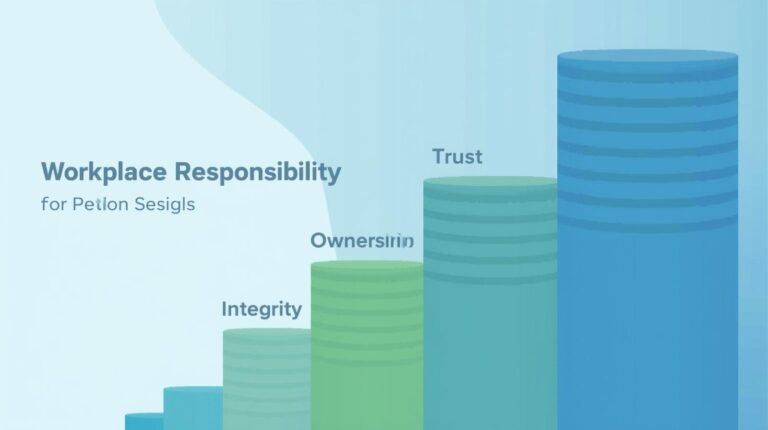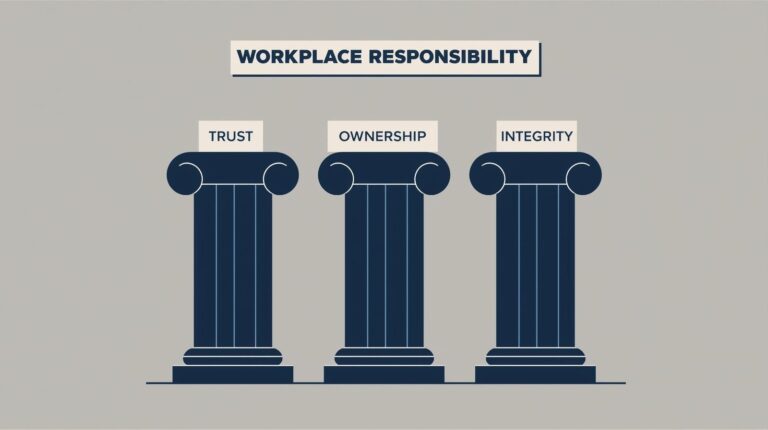The C’s of Accountability: Five Cornerstones of a Strong Workplace Culture
Accountability doesn’t happen by accident. You can hire the most talented employees, build the most detailed project plans, and set the boldest goals, but without accountability, everything risks falling apart. Projects stall, trust erodes, and “good intentions” turn into excuses.
That’s why so many organizations search for a practical framework—a way to translate the broad idea of accountability into day-to-day behaviors. One of the most useful frameworks is what I call the Five C’s of Accountability: Clarification, Common Purpose, Communication, Collaboration, and Consequences.
These aren’t just abstract concepts. They’re concrete building blocks that shape how individuals take ownership and how teams work together. If you want to move accountability from a buzzword into a lived reality, mastering the Five C’s is a strong place to start.
1. Clarification: Defining Expectations Before the Work Begins
Accountability begins with clarity. Too often, teams fail not because people lack effort but because they lack understanding. If expectations aren’t clear, accountability becomes a guessing game.
Think of clarification as answering three critical questions upfront:
What exactly needs to be done?
Who is responsible for each piece of the work?
By when should it be completed?
When employees walk away from a meeting unsure of what “done” looks like, the seeds of frustration and blame are already planted. Clarity eliminates the gray areas. It ensures everyone knows their role, their deadlines, and the standard of quality expected.
In practical terms, clarification means putting agreements in writing, confirming understanding rather than assuming it, and being explicit about priorities. A leader who says, “Let’s have the report ready soon” is setting the team up for failure. A leader who says, “Please have the draft financial report in my inbox by Thursday at 3 pm, using the Q2 format” is creating the conditions for accountability.
2. Common Purpose: Aligning Around Shared Goals
Accountability thrives when people feel connected to something bigger than themselves. That’s where common purpose comes in.
When a team shares a clear purpose, accountability stops feeling like a burden and starts feeling like a commitment to one another. People aren’t just ticking boxes for their boss; they’re contributing to a shared mission.
Take two teams asked to launch a new customer service system:
Team A sees it as another task on their to-do list. They care about finishing but aren’t particularly invested.
Team B understands that the system will reduce client wait times and improve customer loyalty. They see the impact, and they feel ownership of the result.
Which team is more likely to hold each other accountable? The one with a shared sense of purpose.
Leaders play a critical role here. They must connect everyday tasks to the broader vision. Employees should be able to answer the question: Why does my work matter? Without that, accountability feels hollow.
3. Communication: Keeping the Conversation Open
No accountability system works without strong communication. Even the clearest expectations and the best intentions will collapse if people stop talking to each other.
Communication in the context of accountability means:
Regular check-ins instead of waiting for deadlines to discover problems.
Transparency about progress, obstacles, and capacity.
Active listening to understand—not just respond.
Importantly, communication should be two-way. Employees need to feel safe raising concerns, asking for clarification, or admitting when they’re behind. Managers need to provide timely updates, feedback, and encouragement.
Closed communication is one of the biggest barriers to accountability (something we’ll explore more in Module 10). The solution is simple but not easy: build habits of open dialogue. Accountability isn’t a once-a-quarter conversation—it’s an ongoing exchange that builds trust over time.
4. Collaboration: Accountability as a Team Effort
There’s a myth that accountability is about “every man for himself.” In reality, accountability is deeply collaborative. Strong teams recognize that while individuals must own their responsibilities, success ultimately depends on how well people work together.
Collaboration brings accountability to life in two ways:
Peer-to-peer accountability. Team members don’t just report upward to managers; they also hold one another accountable. When peers check in, support, and challenge each other, accountability becomes woven into the culture.
Shared responsibility for outcomes. Collaboration means recognizing that your work impacts others. If you miss a deadline, it doesn’t just affect you—it delays the entire project.
True collaboration requires humility. It’s about admitting when you need help, offering support without judgment, and recognizing that accountability isn’t about perfection but progress.
5. Consequences: Following Through on Commitments
Finally, accountability requires consequences. This doesn’t mean punishment—it means there must be real outcomes connected to whether commitments are met.
If someone consistently fails to deliver and nothing happens, accountability breaks down. The message becomes clear: commitments don’t really matter here. On the other hand, when accountability is reinforced with fair consequences, people know that their actions carry weight.
Consequences can be positive (recognition, promotion, new opportunities) or negative (coaching, performance improvement plans, loss of trust). The key is consistency. Consequences should be applied fairly across the board, not based on favoritism or hierarchy.
When employees see that accountability is taken seriously—and rewarded or addressed appropriately—they’re more likely to step up themselves.
Case in Point: A Team That Lives the Five C’s
Imagine a marketing team tasked with launching a product campaign:
They begin with clarification—clear goals, defined roles, and timelines.
They rally around a common purpose—helping the company reach new customers and expand market share.
They maintain open communication through weekly updates and shared project tools.
They embrace collaboration by supporting one another, stepping in when workloads shift, and celebrating small wins.
And they apply consequences—acknowledging those who deliver consistently while addressing performance issues promptly.
The result? A campaign delivered on time, with creativity and cohesion, and a team that feels stronger for having worked together.
Why the Five C’s Matter More Than Ever
Today’s workplace is more complex than ever: hybrid teams, rapid change, shifting priorities. In this environment, accountability can easily slip through the cracks. The Five C’s provide a roadmap for staying anchored.
Clarification cuts through confusion.
Common purpose builds motivation.
Communication keeps information flowing.
Collaboration strengthens relationships.
Consequences ensure follow-through.
Together, they form a culture where accountability isn’t forced—it’s natural.
Putting the Five C’s into Practice
Here are some practical ways to bring the C’s into your workplace:
Clarification: Start every project by asking, “What does success look like, and who is doing what by when?”
Common Purpose: Regularly connect team tasks to company vision during meetings.
Communication: Use project management tools, but don’t replace conversations with software. Talk often.
Collaboration: Encourage peer recognition—celebrate when teammates help one another.
Consequences: Recognize consistency, not just big wins. And address repeated lapses promptly and fairly.
Final Thoughts
Accountability isn’t just about checking boxes or keeping people in line. It’s about creating a workplace where commitments matter, people feel connected to a shared purpose, and trust is built every day.
The Five C’s—Clarification, Common Purpose, Communication, Collaboration, and Consequences—offer a practical framework for making accountability more than an idea. They turn it into a lived experience.
When these principles are in place, accountability stops being a source of tension and starts being a source of strength. Teams feel empowered, individuals feel trusted, and organizations achieve results they can be proud of.
If you want accountability in your workplace, start with the C’s. They’re not just guidelines—they’re the cornerstones of a culture where responsibility, reliability, and respect thrive.



